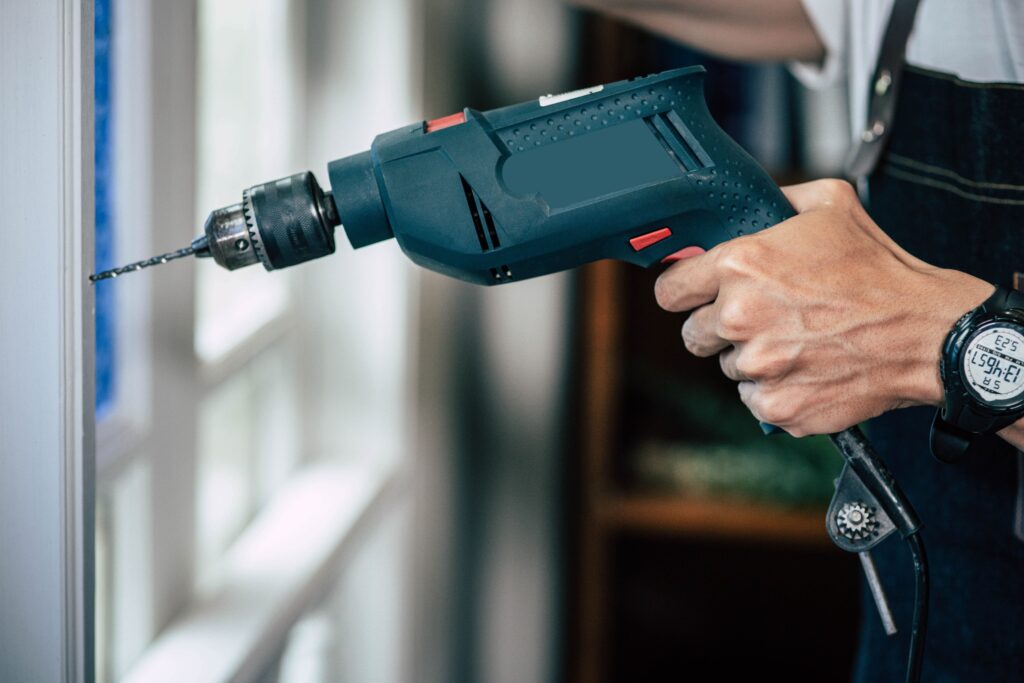When it comes to home improvement projects, having the right tools can make all the difference. One of the most essential tools in any handyman’s arsenal is a drill. In this article, we will explore the various types of drills, their uses, and some tips for choosing the right one for your needs. Whether you’re a seasoned DIY enthusiast or just starting out, understanding drills is crucial for completing tasks efficiently. So, let’s dive right in and discover why a drill is a must-have for every homeowner.
Types of Drills: Finding Your Perfect Match
There are several types of drills available on the market, each designed for specific tasks and materials. By understanding these different types, you can make an informed decision about which drill will best suit your needs.
1. Corded Drills
Corded drills are powerful tools that plug into an electrical outlet. They are known for their consistent power and are ideal for heavy-duty tasks. If you’re planning on tackling large projects or working with tough materials, a corded drill might be the way to go. Just keep in mind that the cord can limit mobility, so consider your workspace.
2. Cordless Drills
On the other hand, cordless drills offer portability and convenience. These battery-operated tools are perfect for smaller jobs and allow for easy maneuverability without the hassle of cords. Over the years, advancements in battery technology have greatly improved their runtime and power. Make sure to choose a model with a sufficient battery life for your projects.
3. Hammer Drills
If you plan to drill into masonry or concrete, a hammer drill is essential. These drills not only rotate but also provide a hammering action, making it easier to break through tough surfaces. They are particularly useful for tasks such as installing anchors or drilling holes for electrical wiring in walls.
4. Impact Drivers
Impact drivers are designed for driving screws and fasteners with maximum torque. While they may not be ideal for drilling holes, they excel at tasks that require a lot of force. If your projects often involve assembling furniture or installing cabinetry, having an impact driver can save you a lot of time and effort.
Choosing the Right Drill for Your Needs
With so many options available, how do you choose the right drill for your specific projects? Here are some practical tips to help guide your decision:
- Assess Your Needs: Consider the types of projects you’ll be working on. If you frequently work with wood, a cordless drill may suffice. For heavier materials, a hammer drill might be necessary.
- Check the Voltage: For cordless drills, pay attention to the voltage. Higher voltage usually translates to more power. A 20V drill is generally more powerful than a 12V drill.
- Look for Features: Some drills come with additional features, such as adjustable speed settings or built-in lights. These can enhance your drilling experience and make tasks easier.
- Brand Reputation: Choose reputable brands known for quality and durability. Investing in a reliable drill can save you money in the long run.
Practical Tips for Using a Drill
Once you’ve chosen the right drill, it’s important to know how to use it effectively. Here are some practical tips to keep in mind:
1. Use the Right Bit
Using the correct drill bit for the material you’re working with is crucial. For example, wood bits are designed differently than masonry bits. Always ensure you have the appropriate bit on hand before starting your project.
2. Start Slow
When beginning a hole, it’s best to start at a low speed. This gives you better control and helps prevent the bit from slipping. Once the bit has made a small indentation, you can increase the speed for efficiency.
3. Maintain Pressure
Applying consistent pressure is key to effective drilling. However, too much pressure can damage both the drill and the material. Find a balance that works for you, and let the drill do the work.
4. Safety First
Always wear safety goggles when using a drill. Flying debris can cause serious injuries, so protecting your eyes is essential. Additionally, make sure your workspace is free of clutter to avoid accidents.
Common Questions About Drills
What is the difference between a drill and an impact driver?
A drill is primarily used for making holes, while an impact driver is designed for driving screws and fasteners. Although both tools can be used for similar tasks, they excel in different areas.
Can I use a regular drill for masonry work?
While you can use a regular drill for masonry, it’s not recommended. A hammer drill is specifically designed for this purpose and will provide better results.
How do I maintain my drill?
Proper maintenance involves cleaning the drill after each use, checking the battery (for cordless models), and ensuring the bits are sharp and in good condition. Regular maintenance can extend the life of your drill.
Are expensive drills worth it?
Investing in a higher-quality drill often pays off in terms of longevity and performance. While there are budget options available, they may not hold up as well over time.
In summary, understanding drills and their various types can significantly enhance your DIY projects. Whether you opt for a corded option for heavy-duty work or a cordless model for its portability, having the right drill will make tasks more manageable. Remember to follow safety guidelines and maintain your tools to ensure they last for years to come. Now that you’re equipped with this knowledge, it’s time to tackle your next project with confidence!






